Our Sun Is Dynamic And Ever-changing. On Friday, July 14, A Solar Flare And A Coronal Mass Ejection Erupted
Our sun is dynamic and ever-changing. On Friday, July 14, a solar flare and a coronal mass ejection erupted from the same, large active region. The coils arcing over this active region are particles spiraling along magnetic field lines.
Solar flares are explosions on the sun that send energy, light and high-speed particles into space. Such flares are often associated with solar magnetic storms known as coronal mass ejections. While these are the most common solar events, the sun can also emit streams of very fast protons – known as solar energetic particle (SEP) events – and disturbances in the solar wind known as corotating interaction regions (CIRs).
Learn more HERE.
Make sure to follow us on Tumblr for your regular dose of space: http://nasa.tumblr.com
More Posts from Nasa and Others
SpaceX Dragon: What’s Onboard?
SpaceX is scheduled to launch its Dragon spacecraft into orbit on April 8, which will be the company’s eighth mission under our Commercial Resupply Services contract. This flight will deliver science and supplies to the International Space Station.

The experiments headed to the orbiting laboratory will help us test the use of an expandable space habitat in microgravity, assess the impact of antibodies on muscle wasting in a microgravity environment, use microgravity to seek insight into the interactions of particle flows at the nanoscale level and use protein crystal growth in microgravity to help in the design of new drugs to fight disease. Here’s an in-depth look at each of them:
The Bigelow Expandable Activity Module (BEAM)

Space is in limited supply on the International Space Station, but with BEAM, the amount of crew space could be expanded! BEAM is an experimental expandable capsule that attaches to the space station. After installation, it will expand to roughly 13-feet long and 10.5 feet in diameter, which would provide a large volume where a crew member could enter. During the two-year test mission, astronauts will enter the module for a few hours three-to-four times a year to retrieve sensor data and conduct assessments of the module’s condition.
Why? Expandable habitats greatly decrease the amount of transport volume at launch for future space missions. They not only take up less room on a rocket, but also provide greatly enhanced space for living and working once they are set up.
The Rodent Research-3-Eli Lilly

The Rodent Research-3-Eli Lilly investigation will use mice as a model for human health to study whether certain drugs might prevent muscle or bone loss while in microgravity.
Why? Crew members experience significant decreases in their bone density and muscle mass during spaceflight if they do not get enough exercise during long-duration missions. The results could expand scientist’s understanding of muscle atrophy and bone loss in space, by testing an antibody that has been known to prevent muscle wasting in mice on Earth.
Microbial Observatory-1
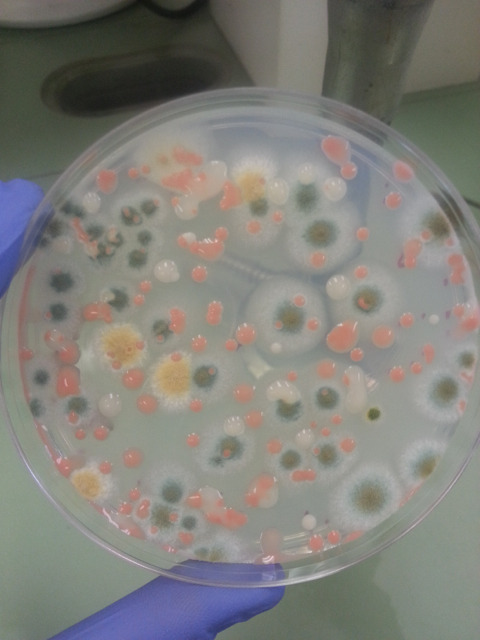
The Microbial Observatory-1 experiment will track and monitor changes to microbial flora over time on the space station.
Why? Obtaining data on these microbial flora could help us understand how such microbes could affect crew health during future long-duration missions.
Micro-10

The Micro-10 investigation will study how the stress of microgravity triggers changes in growth, gene expression, physical responses and metabolism of a fungus called Aspergillus nidulans.
Why? This experiment will study fungi in space for the purpose of potentially developing new medicine for use both in space and on Earth. The stressfull environment of space causes changes to all forms of life, from bacteria and fungi, to animals and people.
Genes in Space-1

Genes in Space-1 is a student-designed experiment that will test whether the polymerase chain reaction (PCR) — which is a fast and relatively inexpensive technique that can amplify or “photocopy” small segments of DNA — could be used to study DNA alterations that crew experience during spaceflight.
Why? In space, the human immune system’s function is altered. Findings from this experiment could help combat some of the DNA changes that crew onboard space station experience while on orbit.
Microchannel Diffusion

Nano science and nanotechnology are the study and application of exceptionally small things and can be used across the fields of medicine, biology, computer science and many others. The way fluid moves is very different on this small scale, so scientists want to know how microparticles might interact. The Microchannel Diffusion investigation simulates these interactions by studying them at a larger scale, the microscopic level. This is only possible on the orbiting laboratory, where Earth’s gravity is not strong enough to interact with the molecules in a sample, so they behave more like they would at the nanoscale.
Why? Nanofluidic sensors could measure the air in the space station, or used to deliver drugs to specific places in the body, among other potential uses. Knowledge learned from this investigation may have implications for drug delivery, particle filtration and future technological applications for space exploration.
The CASIS Protein Crystal Growth 4 (CASIS PCG 4)

CASIS PCG 4 is made up of two investigations that both leverage the microgravity environment in the growth of protein crystals and focus on structure-based drug design (SBDD). Growing crystals in microgravity avoids some of the obstacles they face on Earth, such as sedimentation.
Why? SBDD is an integral component in the drug discovery and development process. It relies on three-dimensional, structural information provided by the protein crystallography to inform the design of more potent, effective and selective drugs.
Watch the Launch!

The Dragon capsule will launch on a Falcon 9 rocket from Cape Canaveral Air Force Station in Florida.
Launch coverage begins at 3:15 p.m. EDT, with launch scheduled for 4:43 p.m. Watch live online on NASA Television: nasa.gov/nasatv
Make sure to follow us on Tumblr for your regular dose of space: http://nasa.tumblr.com
7 Facts That Will Make You Feel Very Small
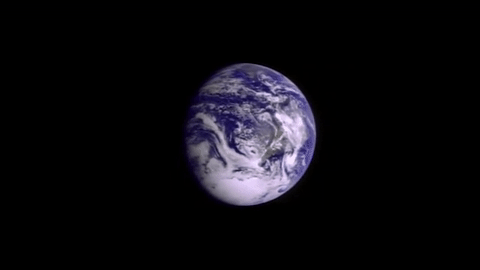
Earth, our home planet, is the fifth largest planet in our solar system and the only planet we know of where life exists. Even though Earth seems extremely large to us, it is actually a tiny spec in the vast expanse of the universe. Here are 7 space facts that will make you feel very small.

1. Our sun is one of at least 100 BILLION stars, just in the Milky Way. Scientists calculate that there are at least 100 billion galaxies in the observable universe, each one brimming with stars. There are more stars than grains of sand on all of Earth’s beaches combined.
In 1995, the first planet beyond our solar system was discovered. Now, thousands of planets orbiting sun-like stars have been discovered, also known as exoplanets.

2. The Milky Way is a huge city of stars, so big that even at the speed of light (which is fast!), it would take 100,000 years to travel across it.

3. Roughly 70% of the universe is made of dark energy. Dark matter makes up about 25%. The rest — everything on Earth, everything ever observed with all of our instruments, all normal matter adds up to less than 5% of the universe.

4. If the sun were as tall as a typical front door, Earth would be the size of a nickel.

5. The sun accounts for almost all of the mass in our solar system. Leaving .2% for all the planets and everything else.

6. Edwin Hubble discovered that the Universe is expanding and that at one point in time (14 billion years ago) the universe was all collected in just one point of space.

7. Four American spacecraft are headed out of our solar system to what scientists call interstellar space. Voyager 1 is the farthest out — more than 11 billion miles from our sun. It was the first manmade object to leave our solar system. Voyager 2, is speeding along at more than 39,000 mph, but will still take more than 296,000 years to pass Sirius, the brightest star in our night sky.
Feeling small yet? Here’s a tool that will show you just how tiny we are compared to everything else out there: http://imagine.gsfc.nasa.gov/features/cosmic/earth.html
Make sure to follow us on Tumblr for your regular dose of space: http://nasa.tumblr.com
Solar System: 2016 Preview
What do we have planned for 2016? A return to the king of planets. A survey of mysterious Ceres. More postcards from Pluto. Anyone who follows solar system exploration in 2016 is in for quite a ride. Last year was one for the record books – and now here are 10 things to look forward to in the new year. See also: what we have planned agency wide for 2016.
Juno Arrives at Jupiter

July 4, 2016 is arrival day for the Juno mission, the first sent expressly to study the largest planet in the solar system since our Galileo mission in the 1990s. Humans have been studying Jupiter for hundreds of years, yet many basic questions about the gas world remain: How did it form? What is its internal structure? Exactly how does it generate its vast magnetic field? What can it tell us about the formation of other planets inside and outside our solar system? Beginning in July, we’ll be a little closer to the answers.
OSIRIS-REx Takes Flight
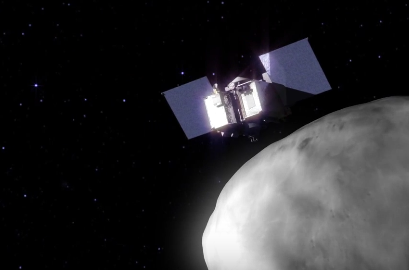
The OSIRIS-REx mission, short for Origins-Spectral Interpretation-Resource Identification-Security-Regolith Explorer, sets sail for an asteroid in September. The spacecraft will use a robotic arm to pluck samples from the asteroid Bennu to help better explain our solar system’s formation and even find clues to how life began.
Dawn Sees Ceres Up Close

After an odyssey of many years and millions of miles, in December the Dawn spacecraft entered its final, lowest mapping orbit around the dwarf planet Ceres. The intriguing world’s odd mountains, craters and salty deposits are ready for their close-ups. We can expect new images of the starkly beautiful surface for months.
Cassini Commences Its Grand Finale

In late 2016, the Cassini spacecraft will begin a daring set of orbits called the Grand Finale, which will be in some ways like a whole new mission. Beginning this year and extending into next, the spacecraft will repeatedly climb high above Saturn’s poles, flying just outside its narrow F ring 20 times. After a last targeted Titan flyby, the spacecraft will then dive between Saturn’s uppermost atmosphere and its innermost ring 22 times. As Cassini plunges past Saturn, the spacecraft will collect rich and valuable information far beyond the mission’s original plan.
New Horizons Sends More Postcards from Pluto

We have stared slack-jawed at the images and discoveries from last year’s Pluto flyby, but the fact is that most of the data that New Horizons collected remains on board the spacecraft. In 2016, we’ll see a steady release of new pictures — and very likely some expanded answers to longstanding questions.
Mars Missions March Forward
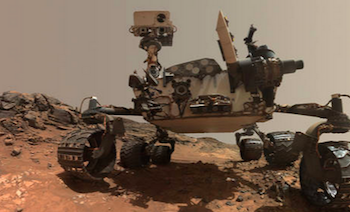
With five of our missions continuing their Martian quests, 2016 should be a good year for discoveries on the Red Planet.
Mars Odyssey
Mars Opportunity
Mars Reconnaissance Orbiter
Mars Curiosity
MAVEN
Mercury Transits the Sun

A transit is a very rare astronomical event in which a planet passes across the face of the sun. In May, Mercury will transit the sun, on of only thirteen Mercury transits each century on average.
LRO Keeps an Eagle Eye On the Moon

The Lunar Reconnaissance Orbiter (LRO) will extend its run in 2016, scanning the moon’s surface with its sharp-eyed instruments, investigating everything from lava tube skylights to changes at the Apollo landing sites.
Spacecraft Fly Under Many Flags

Our partner agencies around the world will be flying several new or continuing planetary missions to destinations across the solar system:
Akatsuki at Venus
ExoMars
Mars Express
Mars Orbiter Mission
Rosetta at Comet 67/P
Technology Demonstration Missions Push the Envelope
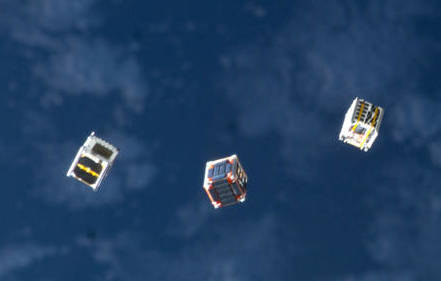
We’re always looking for new frontiers on distant worlds, as well as the technology that will take us there. This year, several missions are planned to take new ideas for a spin in space:
Deep Space Atomic Clock
NODES
LDSD
Make sure to follow us on Tumblr for your regular dose of space: http://nasa.tumblr.com
Launching Rockets from the Top of the World 🚀
Over the next 14 months, our scientists will join a group of international researchers to explore a special region — Earth's northern polar cusp, one of just two places on our planet where particles from the Sun have direct access to our atmosphere.

Earth is surrounded by a giant magnetic bubble known as a magnetosphere, which protects our planet from the hot, electrically charged stream of particles from the Sun known as the solar wind. The northern and southern polar cusps are two holes in this protection — here, Earth's magnetic field lines funnel the solar wind downwards, concentrating its energy before injecting it into Earth’s atmosphere, where it mixes and collides with particles of Earthly origin.

The cusp is the only place where dayside auroras are found — a special version of northern and southern lights, visible when the Sun is out and formed by a different process than the more familiar nighttime aurora. That's what makes this region so interesting for scientists to study: The more we learn about auroras, the more we understand about the fundamental processes that drive near-Earth space — including those processes that disrupt our technology and endanger our astronauts.

Photo credit: Violaene Kaeser
The teams working on the Grand Challenge Initiative — Cusp will fly sounding rockets from two Norwegian rocket ranges that fall under the cusp for a short time each day. Sounding rockets are sub-orbital rockets that shoot up into space for a few minutes before falling back to Earth, giving them access to Earth's atmosphere between 30 and 800 miles above the surface. Cheaper and faster to develop than large satellite missions, sounding rockets often carry the latest scientific instruments on their first-ever flights, allowing for unmatched speed in the turnaround from design to implementation.

Each sounding rocket mission will study a different aspect of Earth's upper atmosphere and its connection to the Sun and particles in space. Here's a look at the nine missions coming up.
1. VISIONS-2 (Visualizing Ion Outflow via Neutral Atom Sensing-2) — December 2018
The cusp isn’t just the inroad into our atmosphere — it’s a two-way street. Counteracting the influx of particles from the Sun is a process called atmospheric escape, in which Earthly particles acquire enough energy to escape into space. Of all the particles that escape Earth’s atmosphere, there’s one that presents a particular mystery: oxygen.
At 16 times the mass of hydrogen, oxygen should be too heavy to escape Earth’s gravity. But scientists have found singly ionized oxygen in near-Earth space, which suggests that it came from Earth. The two VISIONS-2 rockets, led by NASA's Goddard Space Flight Center in Greenbelt, Maryland, will create maps of the oxygen outflow in the cusp, tracking where these heavy ions are and how they’re moving to provide a hint at how they escape.
2. TRICE-2 (Twin Rockets to Investigate Cusp Electrodynamics 2) — December 2018
If the cusp is like a funnel, then magnetic reconnection is what turns on the faucet. When the solar wind collides with Earth’s magnetic field, magnetic reconnection breaks open the previously closed magnetic field lines, allowing some solar wind particles to stream into Earth’s atmosphere through the cusp.
But researchers have noticed that the stream of particles coming in isn’t smooth: instead, it has abrupt breaks in it. Is magnetic reconnection turning on and off? Or is the solar wind shooting in from different locations? TRICE-2, led by the University of Iowa in Iowa City, will fly two separate rockets through a single magnetic field line in the cusp, to help distinguish these possibilities. If reconnection sputters on and off over time, then the two rockets should get quite different measurements, like noting how it feels to run your finger back and forth under a faucet that is being turned on and off. If instead reconnection happens consistently in multiple locations — like having ten different faucets, all running constantly — then the two rockets should have similar measurements whenever they pass through the same locations.

Magnetic reconnection is a process by which magnetic field lines explosively realign
3. CAPER-2 (Cusp Alfvén and Plasma Electrodynamics Rocket) — January 2019
The CAPER-2 rocket, led by Dartmouth College in Hanover, New Hampshire, will examine how fast-moving electrons — particles that can trigger aurora — get up to such high speeds. The team will zero in on the role that Alfvén waves, a special kind of low-frequency wave that oscillates along magnetic field lines, play in accelerating auroral electrons.

An illustration of rippling Alfvén waves
4. G-CHASER (Grand Challenge Student Rocket) — January 2019
G-CHASER is made up entirely of student researchers from universities in the United States, Norway and Japan, many of whom are flying their experiments for the first time. The mission, led by the Colorado Space Grant Consortium at the University of Colorado Boulder, is a collaboration between seven different student-led missions, providing a unique opportunity for students to design, test and ultimately fly their experiment from start to finish. The students involved in the mission — mostly undergraduates but including some graduate teams — are responsible for all aspects of the mission, from developing the initial idea, to securing the funding, to making sure it passes all the tests before flight.
5 & 6. AZURE (Auroral Zone Upwelling Rocket Experiment) and CHI (Cusp Heating Investigation) — April & November/December 2019
When the aurora shine, they don’t just emit light — they also release thermal and kinetic energy into the atmosphere. Some of this energy escapes back into space, but some of it stays with us. Which way this balance tips depends, in part, on the winds in the cusp. AZURE, led by Clemson University in South Carolina, will measure the vertical winds that swish energy and particles around within the auroral oval, the larger ring around the pole where the aurora are most common.
Later that year, the same team will launch the CHI mission, using a methodology similar to AZURE to measure the flow of charged and neutral gases inside the cusp. The goal is to better understand how particles, flowing in horizontal and vertical directions, interact with each other to produce heating and acceleration.
7. C-REX-2 (Cusp-Region Experiment) — November 2019
The cusp is a place where strange physics happens, producing some anomalies in the physical structure of the atmosphere that can make our technology go haywire. For satellites that pass through the cusp, density increases act like potholes, shaking up their orbits. Scientists don’t currently understand what causes these density increases, but they have some clues. C-REX-2, led by the University of Alaska Fairbanks, aims to figure out which variables — wind, temperature or ion velocity — are responsible.
8. ICI-5 (Investigation of Cusp Irregularities-5) — December 2019
Recent research has uncovered mysterious hot patches of turbulent plasma inside the auroral region that rain energetic particles towards Earth. GPS signals become garbled as they pass through these turbulent plasma patches, affecting so many of today’s technologies that depend on them. ICI-5, led by the University of Oslo, will launch into the cusp to take measurements from inside these hot patches. To measure their structure as several scales, the rocket will eject 12 daughter payloads in concentric squares which will achieve a variety of different separations.

9. JAXA's SS-520-3 mission — January 2020
Exploring the phenomenon of atmospheric escape, the Japan Aerospace Exploration Agency's SS-520-3 mission will fly 500 miles high over the cusp to take measurements of the electrostatic waves that heat ions up and get them moving fast enough to escape Earth.
For updates on the Grand Challenge Initiative and other sounding rocket flights, visit nasa.gov/soundingrockets or follow along with NASA Wallops and NASA heliophysics on Twitter and Facebook.
@NASA_Wallops | NASA's Wallops Flight Facility | @NASASun | NASA Sun Science
Make sure to follow us on Tumblr for your regular dose of space: http://nasa.tumblr.com
NASA Science Show & Tell
This week, we’re at one of the biggest science conferences in the country, where our scientists are presenting new results from our missions and projects. It’s called the American Geophysical Union’s Fall Meeting.
Here are a few of the things we shared this week...

The Sun
A few months into its seven-year mission, Parker Solar Probe has already flown far closer to the Sun than any spacecraft has ever gone. The data from this visit to the Sun has just started to come back to Earth, and scientists are hard at work on their analysis.

Parker Solar Probe sent us this new view of the Sun’s outer atmosphere, the corona. The image was taken by the mission’s WISPR instrument on Nov. 8, 2018, and shows a coronal streamer seen over the east limb of the Sun. Coronal streamers are structures of solar material within the Sun's atmosphere, the corona, that usually overlie regions of increased solar activity. The fine structure of the streamer is very clear, with at least two rays visible. Parker Solar Probe was about 16.9 million miles from the Sun's surface when this image was taken. The bright object near the center of the image is Mercury, and the dark spots are a result of background correction.
Hurricane Maria
Using a satellite view of human lights, our scientists watched the lights go out in Puerto Rico after Hurricane Maria. They could see the slow return of electricity to the island, and track how rural and mountainous regions took longer to regain power.

In the spring, a team of scientists flew a plane over Puerto Rico’s forests, using a laser instrument to measure how trees were damaged and how the overall structure of the forests had changed.

Earth’s Ice
Our scientists who study Antarctica saw some surprising changes to East Antarctica. Until now, most of the continent’s melting has been on the peninsula and West Antarctica, but our scientists have seen glaciers in East Antarctica lose lots of ice in the last few years.


Our ICESat-2 team showed some of their brand new data. From the changing height of Antarctic ice to lagoons off the coast of Mexico, the little satellite has spent its first few months measuring our planet in 3D. The laser pulses even see individual ocean waves, in this graph.

Scientists are using our satellite data to track Adélie penguin populations, by using an unusual proxy -- pictures of their poop! Penguins are too small to be seen by satellites, but they can see large amounts of their poop (which is pink!) and use that as a proxy for penguin populations.

Asteroid Bennu
Our OSIRIS-REx mission recently arrived at its destination, asteroid Bennu. On approach, data from the spacecraft’s spectrometers revealed chemical signatures of water trapped in clay minerals. While Bennu itself is too small to have ever hosted liquid water, the finding indicates that liquid water was present at some time on Bennu’s parent body, a much larger asteroid.
We also released a new, detailed shape model of Bennu, which is very similar to our ground-based observations of Bennu’s shape. This is a boon to ground-based radar astronomy since this is our first validation of the accuracy of the method for an asteroid! One change from the original shape model is the size of the large boulder near Bennu’s south pole, nicknamed “Benben.” The boulder is much bigger than we thought and overall, the quantity of boulders on the surface is higher than expected. Now the team will make further observations at closer ranges to more accurately assess where a sample can be taken on Bennu to later be returned to Earth.

Jupiter
The Juno mission celebrated it’s 16th science pass of #Jupiter, marking the halfway point in data collection of the prime mission. Over the second half of the prime mission — science flybys 17 through 32 — the spacecraft will split the difference, flying exactly halfway between each previous orbit. This will provide coverage of the planet every 11.25 degrees of longitude, providing a more detailed picture of what makes the whole of Jupiter tick.

Mars
The Mars 2020 team had a workshop to discuss the newly announced landing site for our next rover on the Red Planet. The landing site...Jezero Crater! The goal of Mars 2020 is to learn whether life ever existed on Mars. It's too cold and dry for life to exist on the Martian surface today. But after Jezero Crater formed billions of years ago, water filled it to form a deep lake about the same size as Lake Tahoe. Eventually, as Mars' climate changed, Lake Jezero dried up. And surface water disappeared from the planet.
Interstellar Space
Humanity now has two interstellar ambassadors. On Nov. 5, 2018, our Voyager 2 spacecraft left the heliosphere — the bubble of the Sun’s magnetic influence formed by the solar wind. It’s only the second-ever human-made object to enter interstellar space, following its twin, Voyager 1, that left the heliosphere in 2012.

Scientists are especially excited to keep receiving data from Voyager 2, because — unlike Voyager 1 — its plasma science instrument is still working. That means we’ll learn brand-new information about what fills the space between the stars.
Learn more about NASA Science at science.nasa.gov.
Make sure to follow us on Tumblr for your regular dose of space: http://nasa.tumblr.com
10 Steps to Confirm a Planet Around Another Star
So you think you found an exoplanet -- a planet around another star? It’s not as simple as pointing a telescope to the sky and looking for a planet that waves back. Scientists gather many observations and carefully analyze their data before they can be even somewhat sure that they’ve discovered new worlds.
Here are 10 things to know about finding and confirming exoplanets.

This is an illustration of the different elements in our exoplanet program, including ground-based observatories, like the W. M. Keck Observatory, and space-based observatories like Hubble, Spitzer, Kepler, TESS, James Webb Space Telescope, WFIRST and future missions.
1. Pick your tool to take a look.
The vast majority of planets around other stars have been found through the transit method so far. This technique involves monitoring the amount of light that a star gives off over time, and looking for dips in brightness that may indicate an orbiting planet passing in front of the star.
We have two specialized exoplanet-hunting telescopes scanning the sky for new planets right now -- Kepler and the Transiting Exoplanet Survey Satellite (TESS) -- and they both work this way. Other methods of finding exoplanets include radial velocity (looking for a “wobble” in a star's position caused by a planet’s gravity), direct imaging (blocking the light of the star to see the planet) and microlensing (watching for events where a star passes in front of another star, and the gravity of the first star acts as a lens).
Here’s more about finding exoplanets.

2. Get the data.
To find a planet, scientists need to get data from telescopes, whether those telescopes are in space or on the ground. But telescopes don’t capture photos of planets with nametags. Instead, telescopes designed for the transit method show us how brightly thousands of stars are shining over time. TESS, which launched in April and just began collecting science data, beams its stellar observations back to Earth through our Deep Space Network, and then scientists get to work.

3. Scan the data for planets.
Researchers combing through TESS data are looking for those transit events that could indicate planets around other stars. If the star’s light lessens by the same amount on a regular basis -- for example, every 10 days -- this may indicate a planet with an orbital period (or “year”) of 10 days. The standard requirement for planet candidates from TESS is at least two transits -- that is, two equal dips in brightness from the same star.

4. Make sure the planet signature couldn’t be something else.
Not all dips in a star's brightness are caused by transiting planets. There may be another object -- such as a companion star, a group of asteroids, a cloud of dust or a failed star called a brown dwarf, that makes a regular trip around the target star. There could also be something funky going on with the telescope’s behavior, how it delivered the data, or other “artifacts” in data that just aren’t planets. Scientists must rule out all non-planet options to the best of their ability before moving forward.

5. Follow up with a second detection method.
Finding the same planet candidate using two different techniques is a strong sign that the planet exists, and is the standard for “confirming” a planet. That’s why a vast network of ground-based telescopes will be looking for the same planet candidates that TESS discovers. It is also possible that TESS will spot a planet candidate already detected by another telescope in the past. With these combined observations, the planet could then be confirmed. The first planet TESS discovered, Pi Mensae c, orbits a star previously observed with the radial-velocity method on the ground. Scientists compared the TESS data and the radial-velocity data from that star to confirm the presence of planet “c.”
Scientists using the radial-velocity detection method see a star’s wobble caused by a planet’s gravity, and can rule out other kinds of objects such as companion stars. Radial-velocity detection also allows scientists to calculate the mass of the planet.

6. …or at least another telescope.
Other space telescopes may also be used to help confirm exoplanets, characterize them and even discover additional planets around the same stars. If the planet is detected by the same method, but by two different telescopes, and has received enough scrutiny that the scientists are more than 99 percent sure it’s a planet, it is said to be “validated” instead of “confirmed.”

7. Write a paper.
After thoroughly analyzing the data, and running tests to make sure that their result still looks like the signature of a planet, scientists write a formal paper describing their findings. Using the transit method, they can also report the size of the planet. The planet’s radius is related to how much light it blocks from the star, as well as the size of the star itself. The scientists then submit the study to a journal.

8. Wait for peer review.
Scientific journals have a rigorous peer review process. This means scientific experts not involved in the study review it and make sure the findings look sound. The peer-reviewers may have questions or suggestions for the scientists. When everyone agrees on a version of the study, it gets published.
9. Publish the study.
When the study is published, scientists can officially say they have found a new planet. This may still not be the end of the story, however. For example, the TRAPPIST telescope in Chile first thought they had discovered three Earth-size planets in the TRAPPIST-1 system. When our Spitzer Space Telescope and other ground-based telescopes followed up, they found that one of the original reported planets (the original TRAPPIST-1d) did not exist, but they discovered five others --bringing the total up to seven wondrous rocky worlds.

10. Catalog and celebrate -- and look closer if you can!
Confirmed planets get added to our official catalog. So far, Kepler has sent back the biggest bounty of confirmed exoplanets of any telescope -- more than 2,600 to date. TESS, which just began its planet search, is expected to discover many thousands more. Ground-based follow-up will help determine if these planets are gaseous or rocky, and possibly more about their atmospheres. The forthcoming James Webb Space Telescope will be able to take a deeper look at the atmospheres of the most interesting TESS discoveries.
Scientists sometimes even uncover planets with the help of people like you: exoplanet K2-138 was discovered through citizen scientists in Kepler’s K2 mission data. Based on surveys so far, scientists calculate that almost every star in the Milky Way should have at least one planet. That makes billions more, waiting to be found! Stay up to date with our latest discoveries using this exoplanet counter.
Make sure to follow us on Tumblr for your regular dose of space: http://nasa.tumblr.com.

Thank you, Tumblr!
That’s it, Tumblr! Losing comm soon. I’m in space, so that happens. Thank you for all your good questions. I enjoyed #AnswerTime with you today!
Keep following my Year In Space here on Tumblr and on Twitter, Facebook and Instagram!
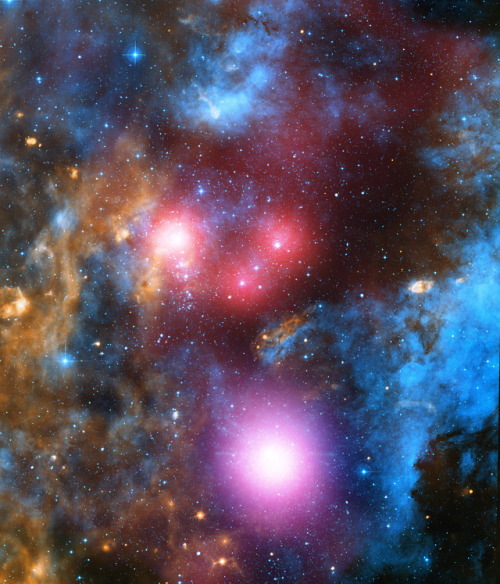
That star stuff you see here? That's what you're made of. You possess the elements ✨
This composite image from our Chandra X-ray Observatory, the Spitzer Space Telescope and the Isaac Newton Telescope shows high-energy X-rays emitted by young, massive stars in the star cluster Cygnus OB2. This year we're celebrating the 20th anniversary of Chandra's launch. Want to dive deeper? Click here
Make sure to follow us on Tumblr for your regular dose of space: http://nasa.tumblr.com.
Astronomy From 45,000 Feet
What is the Stratospheric Observatory for Infrared Astronomy, or SOFIA, up to?

SOFIA, the Stratospheric Observatory for Infrared Astronomy, as our flying telescope is called, is a Boeing 747SP aircraft that carries a 2.5-meter telescope to altitudes as high as 45,000 feet. Researchers use SOFIA to study the solar system and beyond using infrared light. This type of light does not reach the ground, but does reach the altitudes where SOFIA flies.

Recently, we used SOFIA to study water on Venus, hoping to learn more about how that planet lost its oceans. Our researchers used a powerful instrument on SOFIA, called a spectrograph, to detect water in its normal form and “heavy water,” which has an extra neutron. The heavy water takes longer to evaporate and builds up over time. By measuring how much heavy water is on Venus’ surface now, our team will be able to estimate how much water Venus had when the planet formed.

We are also using SOFIA to create a detailed map of the Whirlpool Galaxy by making multiple observations of the galaxy. This map will help us understand how stars form from clouds in that galaxy. In particular, it will help us to know if the spiral arms in the galaxy trigger clouds to collapse into stars, or if the arms just show up where stars have already formed.

We can also use SOFIA to study methane on Mars. The Curiosity rover has detected methane on the surface of Mars. But the total amount of methane on Mars is unknown and evidence so far indicates that its levels change significantly over time and location. We are using SOFIA to search for evidence of this gas by mapping the Red Planet with an instrument specially tuned to sniff out methane.

Next our team will use SOFIA to study Jupiter’s icy moon Europa, searching for evidence of possible water plumes detected by the Hubble Space Telescope. The plumes, illustrated in the artist’s concept above, were previously seen in images as extensions from the edge of the moon. Using SOFIA, we will search for water and determine if the plumes are eruptions of water from the surface. If the plumes are coming from the surface, they may be erupting through cracks in the ice that covers Europa’s oceans. Members of our SOFIA team recently discussed studying Europa on the NASA in Silicon Valley Podcast.

This is the view of Jupiter and its moons taken with SOFIA’s visible light guide camera that is used to position the telescope.
Make sure to follow us on Tumblr for your regular dose of space: http://nasa.tumblr.com
6 Ways You Are Safer Thanks to NASA Technology
By now everyone knows that we are to thank for the memory foam in your mattress and the camera in your cell phone. (Right? Right.)
But our technology is often also involved behind the scenes—in ways that make the products we use daily safer and stronger, and in some cases, that can even save lives.
Here are some examples from this year’s edition of Spinoff, our yearly roundup of “space in your life”:
Impact Testing

What happens to your car bumper in an accident? When does it crumple and when does it crack? And are all bumpers coming off the assembly line created equal?
These types of questions are incredibly important when designing a safe car, and one technology that helps almost every U.S. automobile manufacturer find answers is something we helped develop when we had similar questions about the Space Shuttle.
Before flying again after the Columbia disaster in 2003, we had to be sure we understood what went wrong and how to prevent it from ever happening again. We worked with Trilion, Inc. to develop a system using high-speed cameras and software to analyze every impact—from the one that actually happened on the Shuttle to any others we could imagine—and design fixes.
Finding Survivors

We’re pretty good at finding things you can’t see with the naked eye—from distant exoplanets to water on Mars.
But there are also plenty of uses for that know-how on Earth.
One example that has already saved lives: locating heartbeats under debris.
Engineers at our Jet Propulsion Laboratory adapted technology first devised to look for gravity fluctuations to create FINDER, which stands for Finding Individuals for Disaster and Emergency Response and can detect survivors through dense rubble.
We have licensed the technology to two companies, including R4, and it has already been used in natural disaster responses, including after earthquakes in Nepal, Mexico City, Ecuador, and after Hurricane Maria in Puerto Rico.
Fighting Forest Fires

As we have seen this year with devastating wildfires in California, forest fires can spread incredibly quickly.
Knowing when to order an evacuation, where to send firefighters, and how to make every other decision—all amid a raging inferno—depends on having the most up-to-date information as quickly as possible.
Using our expertise in remote sensing and communicating from space, we helped the U.S. Forest Service make its process faster and more reliable, so the data from airborne sensors gets to decision makers on the front line and at the command center in the blink of an eye.
Safer, Germ-Free Ambulances

When paramedics come racing into a home, the last thing anybody is worrying about is where the ambulance was earlier that morning. A device we helped create ensures you won’t have to.
AMBUstat creates a fog that sterilizes every surface in an ambulance in minutes, so any bacteria, viruses or other contaminants won’t linger on to infect the next patient.
This technology works its magic through the power of atomic oxygen—the unpaired oxygen atoms that are common in the upper reaches of Earth’s atmosphere. We’ve had to learn about these atoms to devise ways to ensure they won’t destroy our spacecraft or harm astronauts, but here, we were able to use that knowledge to direct that destructive power at germs.
Air Filters

Did you know the air we breathe inside buildings is often up to 10 times more polluted than the air outdoors?
Put the air under a microscope and it’s not pretty, but a discovery we made in the 1990s can make a big impact.
We were working on a way to clear a harmful chemical that accumulates around plants growing on a spacecraft, and it turned out to also neutralize bacteria, viruses, and mold and eliminate volatile organic compounds.
Now air purifiers using this technology are deployed in hospital operating rooms, restaurant kitchens, and even major baseball stadiums to improve air quality and keep everyone healthier. Oh, and you can buy one for your house, too.
Driverless Cars

Car companies are moving full-speed ahead to build the driverless cars of the not-so-distant future. Software first created to help self-learning robots navigate on Mars may help keep passengers and pedestrians safer once those cars hit the road. The software creates an artificially intelligent “brain” for a car (or drone, for that matter) that can automatically identify and differentiate between cars, trucks, pedestrians, cyclists, and more, helping ensure the car doesn’t endanger any of them.
So, now that you know a few of the spinoff technologies that we helped develop, you can look for them throughout your day. Visit our page to learn about more spinoff technologies: https://spinoff.nasa.gov Make sure to follow us on Tumblr for your regular dose of space: http://nasa.tumblr.com.
-
 cyber-centurion liked this · 1 year ago
cyber-centurion liked this · 1 year ago -
 aleb718 liked this · 1 year ago
aleb718 liked this · 1 year ago -
 trashyatcat reblogged this · 1 year ago
trashyatcat reblogged this · 1 year ago -
 scholarlyendeavours reblogged this · 1 year ago
scholarlyendeavours reblogged this · 1 year ago -
 monikabose liked this · 1 year ago
monikabose liked this · 1 year ago -
 hiphappyhair reblogged this · 1 year ago
hiphappyhair reblogged this · 1 year ago -
 hiphappyhair liked this · 1 year ago
hiphappyhair liked this · 1 year ago
Explore the universe and discover our home planet with the official NASA Tumblr account
1K posts